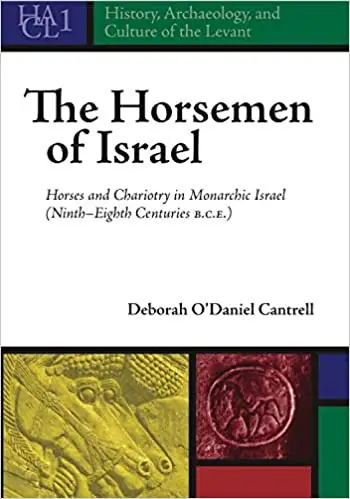Deborah O'Daniel Cantrell, "The Horsemen of Israel: Horses and Chariotry in Monarchic Israel "
English | ISBN: 1575062046 | 2011 | 162 pages | PDF | 2 MB
English | ISBN: 1575062046 | 2011 | 162 pages | PDF | 2 MB
Almost every book in the Hebrew Bible mentions horses and chariots in some manner, usually in a military context. However, the importance of horses, chariots, and equestrians in ancient Israel is typically mentioned only in passing, if at all, by historians, hippologists, and biblical scholars. When it is mentioned, the topic engenders a great deal of confusion.
Notwithstanding the substantial textual and archaeological evidence of the horse’s historic presence, recent scholars seem to be led by a general belief that there were very few horses in Iron Age Israel and that Israel’s chariotry was insignificant. The reason for this current sentiment is tied primarily to the academic controversy of the past 50 years over whether the 17 tripartite-pillared buildings excavated at Megiddo in the early 20th century were, in fact, stables. Although the original excavators, archaeologists from the University of Chicago, designated these buildings as stables, a number of scholars (and a few archaeologists) later challenged this view and adopted alternative interpretations. After they “reassessed” the Megiddo stables as “storehouses,” “marketplaces,” or “barracks,” the idea developed that there was no place for the horses to be kept and, therefore, there must have been few horses in Israel. The lack of stables, when added to the suggestion that Iron Age Israel could not have afforded to buy expensive horses and maintain an even more expensive chariotry, led to a dearth of horses in ancient Israel; or so the logic goes that has permeated the literature. Cantrell’s book attempts to dispel this notion.
Read more



